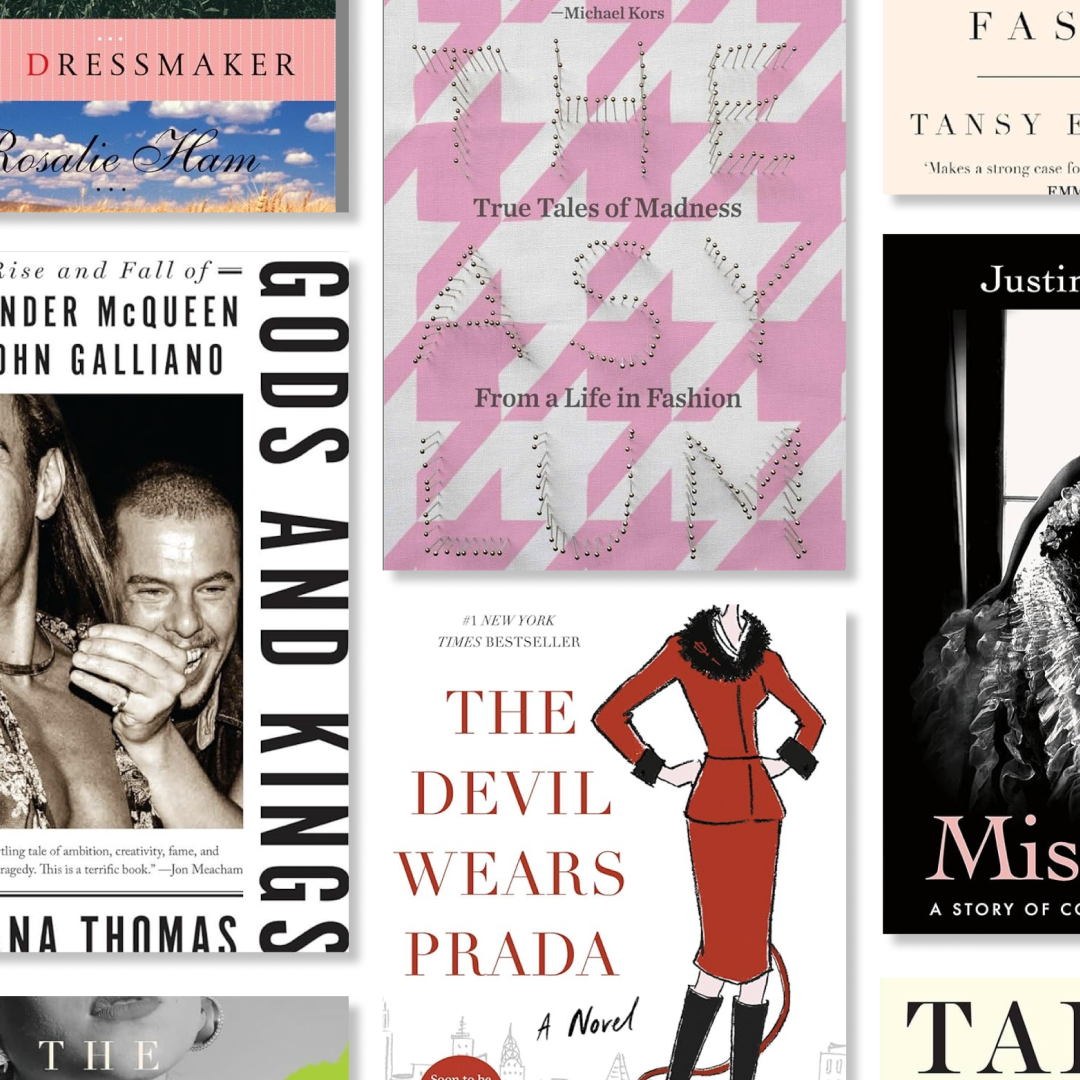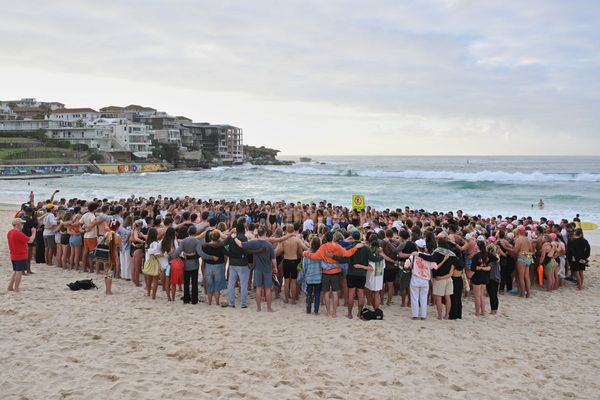
Fashion is so much more than just the clothes you wear. The industry intersects with practically every aspect of our lives, with major impacts on the economy, the environment, and, yes, daily fit checks—and it’s been doing so for centuries. Thanks to that outsized influence, there are countless fashion films, documentaries about style, and even books about fashion for anyone interested in diving into the industry. Fashion books—from rom-com novels to historical fiction to deeply researched exposés and sociological deep-dives—especially provide a way to learn more about the industry's effects on the wider world, or how to see beautiful clothes.
Here, we’ve rounded up 22 of the best fashion books, including must-read memoirs from major names, not one but three fashion-forward novels that have made it to the big screen, art books that will be the star of your coffee table, and more.
The Best Fashion Coffee Table Books
Throughout the 1900s, fashion went through a massive, irreversible transformation, from an extremely exclusive, salon-based industry to a globe-spanning, department store-filling one. That shift is on full display in the century’s clothing ads, as compiled in this almost 600-page tome, which meticulously documents both the ever-evolving styles of the times and the ways that designers learned to reach new customers amid increasing competition.
An attention-grabbing coffee table book, this compilation includes 150 photos of the iconic artist’s bright, colorful clothes, often paired alongside her works of art reflecting the same hues and patterns. Throughout, Susana Martinez Vidal describes how Kahlo used her unique aesthetic and singular sense of style to make a statement wherever she went—and how her legacy lives on in modern-day fashions.
The Best Fashion History Books
In 1973, a charity fashion show at the Palace of Versailles pitted five designers from Europe and the U.S. against one another. Against all odds and expectations, the American contingent—Oscar de la Renta, Bill Blass, Anne Klein, Halston, and Stephen Burrows—along with their diverse group of supermodels, were declared the victors over Europe’s Yves Saint Laurent, Hubert de Givenchy, Pierre Cardin, Emanuel Ungaro, and Marc Bohan, officially marking the U.S.’s entry as a major player on the global fashion scene.
Though, of course, not the most important part, fashion has certainly played a significant role in countless protests and revolutions throughout history. Camille Benda, a costume designer and fashion historian, maps out those trends. She explores everything from the slogan-printed newspaper dresses of suffragettes to the safety pin accessories that came to symbolize the punk movement to the pink “pussy hats” of the #MeToo movement and Women’s March.
The luxury fashion and hip-hop industries have had something of a symbiotic relationship for decades. With huge names in rap and hip-hop as avid customers and partners of high-end fashion houses, those same designers have, in turn, taken cues from the streetwear made popular by those artists. Sowmya Krishnamurthy maps out the major players in both camps to illustrate how hip-hop has irrevocably changed the face of luxury fashion in the last 50 years alone.
Both Alexander McQueen and John Galliano were hailed as superstars when they each burst on the scene in the ‘90s and proceeded to take the fashion world by storm. Less than two decades later, however, that had all changed, as McQueen tragically died by suicide and Galliano was (briefly) exiled from the industry after expressing anti-Semitic views. Thomas details the ups and downs of both designers’s careers, setting them against the backdrop of the transformation of luxury fashion that was also occurring at the time.
Maggie Bullock’s 2023 book offers exactly what its subtitle suggests: an intensely researched, behind-the-scenes look—backed by dozens of interviews with company alums and industry experts—at how J.Crew built up a reputation as a lifestyle-defining brand throughout the second half of the 20th century, then saw it all almost crumble to the ground amid the “retail apocalypse” that hit fashion in the 2010s.
Most fashion lovers are familiar with Christian Dior, his namesake fashion house, and his “New Look,” but it’s much less likely that you’ve heard the story of his younger sister Catherine. Justine Picardie turned the spotlight on Catherine in this 2021 biography, detailing her experiences as a French Resistance fighter during World War II, as a concentration camp survivor, and, after the war, as a flower trader and farmer, and a major influence on her brother’s designs.
In this 2024 LGBTQ+ book, Eleanor Medhurst writes about how the fashion choices of queer women throughout history have largely been overlooked, but can say quite a lot about their lives and changing societal status over time. It shines a much-needed spotlight on an entire group that’s too often been overshadowed, celebrating the ever-evolving style of the lesbian community, from 17th-century royals to modern-day LGBTQ+ rights activists, and everyone in between.
In the golden age of department stores, in mid-20th-century America, though men owned the stores themselves, they were often run by powerful women. This 2024 book zooms in on three of those women in particular—Hortense Odlum of Bonwit Teller, Dorothy Shaver of Lord & Taylor, and Geraldine Stutz of Henri Bendel—all of whom ended up making a major impact on the way Americans dressed and shopped.
The Best Fashion Memoirs
Simon Doonan spent more than 30 years at Barneys New York, culminating in a stint as its creative director before the famed department store shuttered in 2019. In this book of essays, he offers an often-hilarious glimpse into the wild world of luxury fashion, in which, according to him, the eccentricity, loyalty, and over-enthusiasm of any true fashion lover created a truly unhinged environment.
The late André Leon Talley’s career as a journalist, stylist, creative director, and general fashion icon stretched nearly half a century. In this memoir, published a year before his 2022 death, he takes a walk down memory lane, revisiting not only the high points of his storied career in fashion but also the racism and cutthroat competition that he had to overcome to make it as far as he did.
This one’s for anyone who’s ever stared longingly at photos from Fashion Week, wishing for a chance to join in on that particular brand of chic chaos. Billed as “an outsider’s view from inside the fashion industry,” journalist Amy Odell’s memoir not only gives readers the scoop on what it’s really like to make it in the industry—and offers advice to do the same—but also reflects on what the wild world of fashion says about humanity itself.
Edward Enninful, the former editor-in-chief of British Vogue, hasn't always had a glamorous life. As he describes in this 2022 memoir, he grew up as a working-class refugee, and then, as an openly gay Black man, chose to enter into an industry that hasn’t always been the most welcoming to those who don’t fit into its limited mold. Triumphing over those challenges, however, has made Enninful into a serious changemaker: As the first Black editor-in-chief of the magazine, he’s worked hard to make its pages more inclusive, featuring a refreshingly broad variety of models, designers, and photographers in every issue.
The Best Nonfiction Books About the Fashion Business
This Emma Watson-approved pick digs into how, in many ways, the fashion industry serves to reinforce the dangerous ideals of an unchecked capitalist system. As Tansy E. Hoskins suggests, it’s time for a full-on fashion revolution—one that’ll overthrow the current classist, racist, climate-damaging norms.
Teri Agins’s 2000 book makes the case that as fashion has become a bigger and bigger business, that growth is draining away the industry’s artistry. Essentially, according to the journalist, much of the creativity that would’ve previously gone into actual clothing designs is now poured instead into mass-marketing strategies, and Agins digs into every step of the garment-making process to illustrate the phenomenon.
It’s no secret that fast fashion and overconsumption for the last several decades have had unfathomable consequences on the environment, labor practices, and the state of creativity itself. Rather than harping on about those daunting issues, however, Dana Thomas’s 2020 book takes a more optimistic approach, focusing on the individuals and companies that are working toward a more sustainable future in fashion.
Just a few short decades ago, textile manufacturing made up a massive part of the American economy. That work has been increasingly outsourced overseas, however, amid growing demand for cheaper labor and materials. Rachel Slade’s 2024 book follows one couple’s shockingly difficult journey toward a deceptively simple goal: producing a sweatshirt that’s ethically and American-made—by union-backed employees, with materials entirely sourced from the U.S.
The Best Fashion Novels
The source material for a popular chick flick, the original book in Sophie Kinsella’s bestselling series introduces Becky Bloomwood, the titular shopping addict. Though she works as a financial journalist for Successful Savings magazine, in her own life, she’s deeply in debt, thanks to her reliance on retail therapy to cure all ills. The romance novel is lighthearted and quirky and, of course, has a happy ending—think of it as a palate cleanser for the much heavier material elsewhere on this list.
As World War II ramped up, Coco Chanel and Elsa Schiaparelli were building a serious rivalry to rule Paris’s fashion scene. Jeanne Mackin’s novel places a young American woman between the two designers, giving a (fictionalized) insider’s look at their intense fight for dominance amid the backdrop of the looming war.
The Devil Wears Prada may be the most beloved movie about the fashion industry, so we obviously had to include the book that inspired it on this list. Though Lauren Weisberger’s 2003 novel delves deeper into the main character Andy Sachs’s personal life and those of her friends, it still charts her education in and growing appreciation for the world of fashion while working as an assistant to a truly formidable magazine editor.
Before it was adapted into a 2015 film starring Kate Winslet and Liam Hemsworth, The Dressmaker was Rosalie Ham’s 2000 debut novel. The genre-bending story is essentially a dark Gothic dramedy, focusing on a woman named Myrtle "Tilly" Dunnage who returns to her hometown to care for her mother. Her past resurfaces, considering the town she grew up in exiled her during her childhood. Amid that mysterious background, Tilly’s expert dressmaking is a major plot point, as she uses it to win favor—to mixed effects—with those who’d previously shunned her.







